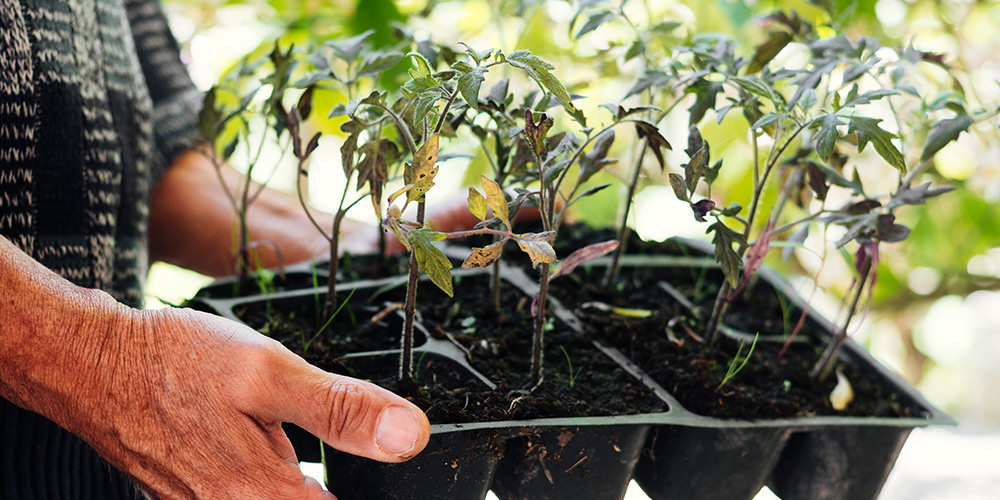LED Propagation Lights for Plant Cuttings: A Beginner's Guide
Asexual propagation, such as tissue culture and cutting propagation, is widely used in modern propagation. Propagating new plants from cuttings is an effective way to clone and harvest uniform plants quickly. It's truly magical to watch a small stem or leaf cutting develop roots and transform into a thriving, independent plant.
One of the secret weapons for successful cutting propagation is LED lights. Supplementing lighting during propagation allows for producing cuttings with higher quality and better root structure in a short period of time. In this beginner’s guide, we will discuss the process of propagating plants from cuttings and the management of the LED lighting system during propagation.
What is propagation by cuttings?
Cutting propagation is a method of creating new plants by using pieces of the stem, roots, or leaves from an existing plant, rather than growing from seeds. This process is also known as vegetative propagation or cloning.
Propagation by cuttings is an effective way to create a genetically identical clone of the parent plant. It is particularly useful for preserving the desirable traits of a specific plant variety or cultivar, as the new plant will share the same genetic makeup as the parent.

How to propagate plants from cuttings?
Here is a step-by-step guide on how to propagate plants from cuttings.
Select healthy cuttings
Choose cuttings from healthy, disease-free plants during their active growing season. For example, when taking stem cuttings, it's best to select a 4-6 inch long stem with several nodes, as these are where new roots will form. Then, use a sharp and clean pair of scissors to cut the stem at a 45° angle just below a leaf node.
Prepare the cuttings
Remove any lower leaves that will be submerged in water or a rooting medium later. For faster root development, you can dip the cut end of the stem in a rooting hormone powder containing auxin before planting.
Plant the cuttings
Make a hole in the planting medium and insert the cutting about 1-2 inches deep. Ensure that at least two nodes are buried for root development.
Provide optimal environment
There are four stages for cuttings to grow into new plants: cutting insertion into the substrate, callus development, root development, and further root and shoot development. Many factors should be considered and adjusted to create an optimal environment for successful cutting propagation. These factors include lighting, humidity, temperature, moisture, and ventilation.
For the early stage of rooting, maintain high humidity around 90-100% to avoid wilting or drying out. A media temperature between 22-24°C will also contribute to faster rooting. Cuttings require lighting, but direct sunlight will stress the cutting. It would be better to place cuttings in a warm place, but avoid direct sunlight. Therefore, LED grow lights are great options as supplemental lighting.
Monitor and wait
Normally, roots will form within a few weeks, but some plants may require a longer time or even several months. You must check the cuttings regularly and maintain soil moisture without overwatering. Once roots have formed, provide lower humidity and more light for the new plants.

Lighting management for cuttings
Light is essential for photosynthesis, the process by which plants convert light energy into the food needed for growth. During vegetative propagation, root development is a priority, and light helps create the energy needed for this process. Light spectrum, intensity, and photoperiod are critical for managing lighting during cutting propagation.
Light spectrum
Light spectrum in the PAR range (400-700 nm) is effective in promoting photosynthesis and improving plant growth. However, different light wavelengths in this range also have different effects. Blue light (400-500 nm) promotes root development, compact growth, and chlorophyll production. Red light (600-700 nm) is beneficial for stem elongation and flowering. It is recommended to use LED lights with a combination of red and blue light (a higher ratio of blue light) for root development.
Light intensity
Cuttings require light to provide energy for root development. However, neither too little nor too much light is beneficial for cuttings. Too little light will result in rooting failure, while too much light can bleach leaves and accelerate leaf drying. Therefore, it is critical to adjust the light intensity at different stages of propagation.
For high-light crops, a low light intensity of about 120 to 200 µmol/m²/s-1 is sufficient for callus formation. During this early stage of propagation, low light intensity can prevent desiccation. Once roots have developed, the light intensity should be increased to 200-400 µmol/m²/s-1, as plants can tolerate more light when they are rooted. After roots fill half of the plug, the light intensity can be further increased to 500-800 µmol/m²/s-1. The higher light intensity can help plants adapt to greenhouses or other growing environments faster and easier.
Photoperiod
Generally, unrooted cuttings do not need special control of the photoperiod. However, it does not mean you can ignore the photoperiod during propagation. Once roots initiate, you should pay attention to the photoperiod to prevent premature flower induction during propagation. That is because certain photoperiods can promote flowering.
A photoperiod of up to 18 hours is acceptable for cuttings before they are rooted. Once roots have developed, it is recommended to shorten the photoperiod to 12-13 hours for most plants, especially for long-day plants.

At Atop, we provide various lighting solutions tailored to your needs. If you need any help with horticulture lighting, please feel free to contact us.

